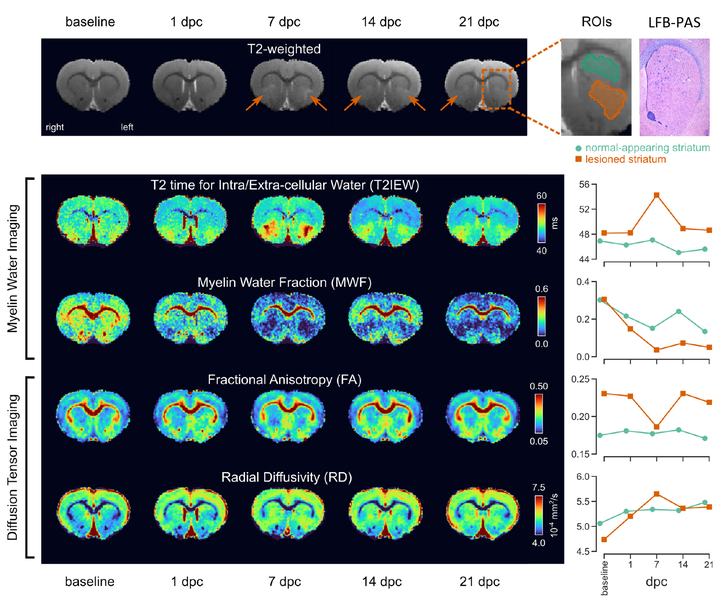Lack of astrocytes hinders parenchymal oligodendrocyte precursor cells from reaching a myelinating state in osmolyte-induced demyelination

Abstract
Demyelinated lesions in human pons observed after osmotic shifts in serum have been referred to as central pontine myelinolysis (CPM). Astrocytic damage, which is prominent in neuroinflammatory diseases like neuromyelitis optica (NMO) and multiple sclerosis (MS), is considered the primary event during formation of CPM lesions. Although more data on the effects of astrocyte-derived factors on oligodendrocyte precursor cells (OPCs) and remyelination are emerging, still little is known about remyelination of lesions with primary astrocytic loss. In autopsy tissue from patients with CPM as well as in an experimental model, we were able to characterize OPC activation and differentiation. Injections of the thymidine-analogue BrdU traced the maturation of OPCs activated in early astrocyte-depleted lesions. We observed rapid activation of the parenchymal NG2+ OPC reservoir in experimental astrocyte-depleted demyelinated lesions, leading to extensive OPC proliferation. One week after lesion initiation, most parenchyma-derived OPCs expressed breast carcinoma amplified sequence-1 (BCAS1), indicating the transition into a pre-myelinating state. Cells derived from this early parenchymal response often presented a dysfunctional morphology with condensed cytoplasm and few extending processes, and were only sparsely detected among myelin-producing or mature oligodendrocytes. Correspondingly, early stages of human CPM lesions also showed reduced astrocyte numbers and non-myelinating BCAS1+ oligodendrocytes with dysfunctional morphology. In the rat model, neural stem cells (NSCs) located in the subventricular zone (SVZ) were activated while the lesion was already partially repopulated with OPCs, giving rise to nestin+ progenitors that generated oligodendroglial lineage cells in the lesion, which was successively repopulated with astrocytes and remyelinated. These nestin+ stem cell-derived progenitors were absent in human CPM cases, which may have contributed to the inefficient lesion repair. The present study points to the importance of astrocyte-oligodendrocyte interactions for remyelination, highlighting the necessity to further determine the impact of astrocyte dysfunction on remyelination inefficiency in demyelinating disorders including MS.